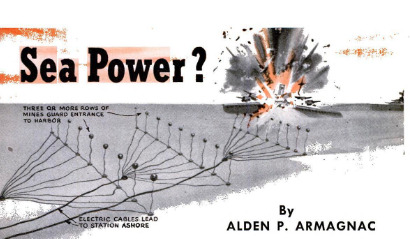-
Title (Dublin Core)
-
Can mines conquer Sea power?
-
Article Title and/or Image Caption (Dublin Core)
-
Can mines conquer Sea power?
-
extracted text (Extract Text)
-
WHAT can be
done about |
thewarmen- |
ace of sub-
‘marine mines? How are
they laid? What kinds
are there? Why do the
U. 8. Army and Navy
use different types?
Answers to questions
ike these, which head-
line readers are asking
today, present a reveal
ing picture of the mod-
ern art of mine laying,
“Observation mines,”
planted in a harbor en-
trance and fired elece
trically from the shore,
fulfill a purely defen-
sive mission. Together
‘with mighty coast-de-
fense guns, they bar passage to enemy ships
attempting to enter a port. Moored in three
or more rows, six to ten feet below the
surface, these forty-inch globes hold 200
pounds of T.N.T. apiece.
Submerged wires link
them to the firing sta-
tion. A friendly vessel
may bump squarely in-
to one without harm.
But a pair of observers
with telescopes, in hid-
den vantage points
ashore, quickly con-
verge their telescopes
upon an approaching
enemy warship. Just as
the unsuspecting in-
vader passes over the
charted position of a
mine, they give the sig-
nal to fire. Pressing an
electric button explodes
the charge, disabling or
sinking the hostile craft.
The mines may be fired
singly or in whole groups at a time, as cir-
cumstances require.
With the aid of little slate-gray vessels
called mine planters, all U. S. observation
mines are laid by the Army. Few
military secrets are more jealously
guarded than the technical details
of harbor mining. But civilian ob-
servers recently were permitted a
glimpse of its effectiveness in an
Army demonstration near its sub-
marine mine depot at Fort Monroe,
Va, in which a miniature target
representing a ship was blown to
bits as it was towed through a prac-
tice mine field.
“Contact mines” and related types,
in contrast with “observation mines,”
explode automatically when a ship
strikes them. Mines of this sort are
laid by our Navy. A self-acting an-
chor, containing the mooring cable,
accurately fixes the distance of the
mine below the surface regardless
of sea depth. They may be used de-
tensively, in carefully charted mine
fields with secret gaps, to keep enemy
ships out of home waters; or offen-
sively, to blockade an enemy's ports
or sea outlets completely. Horned
mines, antenna mines, magnetic
mines, the unmoored Leon mine,
and acoustical mines illustrate the
diversity of present-day naval types,
which contain on the average about
300 pounds of T.N.T.
Five-inch leaden fingers, project-
ing from the globular or pear-shaped
casing of a typical horned mine,
serve as its triggers. When a ship's
hull strikes one, it breaks a glass
vial within, spilling a chemical solu-
tion into a cup containing zinc and
carbon strips. This forms an electric
battery, energizing the firing mechanism
and instantaneously exploding the mine.
Antenna mines, first introduced by the
U. S. Navy, multiply the effective range of
the “trigger” mechanism. Above the mine,
a float supports a long vertical copper wire.
When the steel hull of a submarine or sur-
face ship touches the copper, the galvanic
action of the dissimilar metals sets up a
faint electric current, and a supersensitive
electric firing device detonates the mine.
It was the greatly increased danger zone of
the antenna mine that made possible the
famous North Sea Barrage of 1918—an
enormous curtain of 70,000 mines, stretch-
ing from Scotland to Norway, that bottled
up German submarines. A new British
adaptation of the device may be used in a
current Admiralty plan to lay a defensive
belt of no less than 200,000 mines, eight miles
offshore, along the entire east coast of Great
Britain.
Magnetic mines, such as Germany is re-
ported to be laying, employ another method
to increase their range. Approach a compass
with a steel bar, and the magnetic needle
will be deflected. By applying the same prin-
ciple, the firing mechanism of a magnetic
mine is set off by the steel hull of a ship.
Self-supporting at any depth, the Leon
mine of Swedish invention offers a particular
hazard because it has no mooring cable that
a sweep wire can catch. An electric-pow-
ered propeller maintains it midway between
surface and bottom until its storage battery
is switched off or exhausted.
Mines fitted with acoustical horns, and
intended to be fired
by the sound of a pass-
ing ship, are said to
have been found re-
cently in British wa-
ters and recovered in-
tact for examination by experts. Developing
the idea, an American inventor proposes a
torpedo-shaped, self-propelled acoustical
mine that would rise from a shallow bottom
and follow the sound until it scored a direct
hit upon the ship.
From beneath the sea, from surface ships,
and now even from the air, naval mines may
be sown. For the first time in the history
of warfare, Germany has introduced the |
innovation of parachuting mines from
planes—probably torpedo-carrying aircraft
adapted for the purpose. According to some
reports, the parachute serves to break the
fall of the mine and prevent a premature ex- |
plosion when it strikes the water. But tor-
pedoes may be launched
from planes with no such
precaution, and it seems
likely that the parachute
has a more important
object. The curved tra-
Jjectory of ordinary mis-
siles dropped from a
speeding air raider would
makeaccurate placement
difficult for a mine-lay-
ing plane, twisting and
turning to dodge coast-
defense searchlights and
antiaircraft guns. A para-
chute, however, would
immediately check the
forward motion of a re-
leased mine and drop it
almost squarely beneath
a low-lying plane criss-
crossing a harbor chan-
nel or estuary.
Submarines, fitted as
mine layers, can also
carry mine attacks into
an enemy's own harbors.
They launch their mines
horizontally through
stern tubes, or ver-
tically through wells
built into the craft.
Like airplanes, they
suffer the disadvan-
tage that they can
carry only a limited
number of mines.
Can mines and
mine layers of the
latest design cripple |
a warring nation's
sea power and its
ocean-borne com-
merce? Daring crews of tiny mine-sweep-
ing craft appear so far to be fighting a win-
ning battle against them, with the aid of
equally ingenious counter-weapons.
One of their principal aids, the Burney
paravane, resembles a model-size airplane.
Its vanes are set so that it will swing wide
of the ship when towed beneath the water.
Men aboard the vessel feel jarring vibra-
tions and hear a terrific grinding noise as
the tow line encounters and scrapes along
the mooring cable of a mine. A moment
later, the cable is guided into powerful jaws
that cut it in two. The loose mine is then
exploded by rifle or machine-gun fire.
-
Contributor (Dublin Core)
-
Alden P. Armagnac (article writer)
-
Language (Dublin Core)
-
eng
-
Date Issued (Dublin Core)
-
1940-03
-
pages (Bibliographic Ontology)
-
78-83
-
Rights (Dublin Core)
-
Public domain
-
Archived by (Dublin Core)
-
Sami Akbiyik
-
Marco Bortolami (editor)
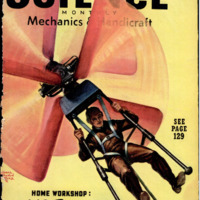 Popular Science Monthly, v. 136, n. 3, 1940
Popular Science Monthly, v. 136, n. 3, 1940
 Ekran Resmi 2022-01-07 10.58.22.png
Ekran Resmi 2022-01-07 10.58.22.png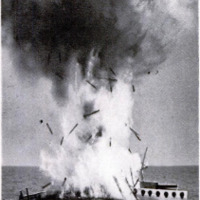 Ekran Resmi 2022-01-07 10.58.37.png
Ekran Resmi 2022-01-07 10.58.37.png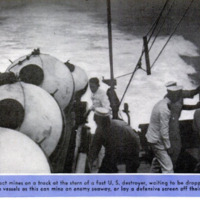 Ekran Resmi 2022-01-07 10.58.47.png
Ekran Resmi 2022-01-07 10.58.47.png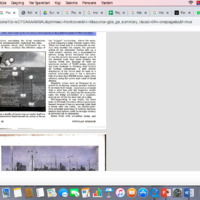 Ekran Resmi 2022-01-07 10.58.55.png
Ekran Resmi 2022-01-07 10.58.55.png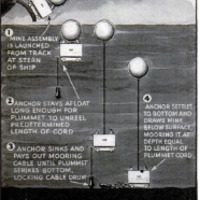 Ekran Resmi 2022-01-07 10.58.56.png
Ekran Resmi 2022-01-07 10.58.56.png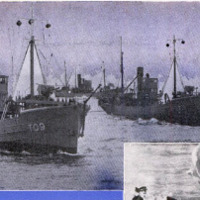 Ekran Resmi 2022-01-07 10.59.05.png
Ekran Resmi 2022-01-07 10.59.05.png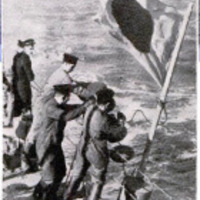 Ekran Resmi 2022-01-07 10.59.14.png
Ekran Resmi 2022-01-07 10.59.14.png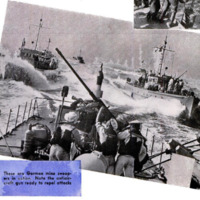 Ekran Resmi 2022-01-07 10.59.23.png
Ekran Resmi 2022-01-07 10.59.23.png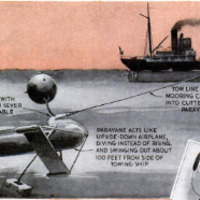 Ekran Resmi 2022-01-07 10.59.36.png
Ekran Resmi 2022-01-07 10.59.36.png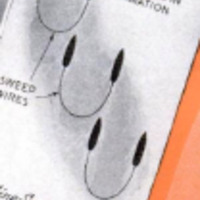 Ekran Resmi 2022-01-07 10.59.46.png
Ekran Resmi 2022-01-07 10.59.46.png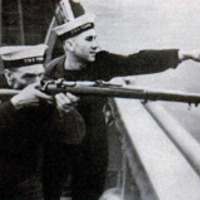 Ekran Resmi 2022-01-07 10.59.53.png
Ekran Resmi 2022-01-07 10.59.53.png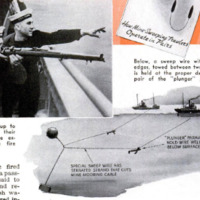 Ekran Resmi 2022-01-07 10.59.59.png
Ekran Resmi 2022-01-07 10.59.59.png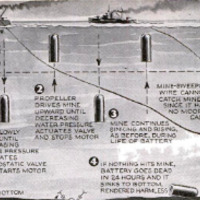 Ekran Resmi 2022-01-07 11.00.12.png
Ekran Resmi 2022-01-07 11.00.12.png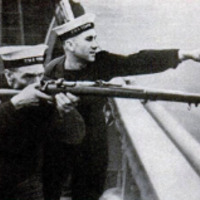 Ekran Resmi 2022-01-07 10.59.53.png
Ekran Resmi 2022-01-07 10.59.53.png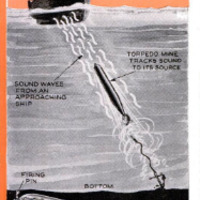 Ekran Resmi 2022-01-07 11.00.33.png
Ekran Resmi 2022-01-07 11.00.33.png
